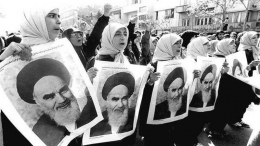Iran, the land of the Aryans. Since 1979, the Iranian Islamic Revolution led by Shiite cleric Ayatollah Khomeini resonated far outside the country's borders, as far as affecting the political landscape of the Middle East. As the revolutionaries gained control, it became clear that they were determined to propagate their ideological knowledge. Since the events of the Arab Spring in 2011, Iran's foreign policy objectives have evolved, and the Middle Eastern region has seen the rise of a new power with big ambitions. Through this piece of writing, I will discuss the basis of Iran's ambitions to dominate the Middle East.
To know about the basis of their ambition, let's go back to the 1979 revolution first. The revolution was more than just a domestic uprising; it was also a mission to propagate the spirit of their revolution. Iran sees itself as an anti-imperialist Muslim world leader, particularly among Shiites, and as the voice of the oppressed against the oppression of the United States, Israel, and its Western allies. However, despite their logic, their actions in the Middle East, especially in Iraq, have imperialist tendencies.
Iran's successful attempt at regional dominance in the Middle East dates back to 1982, when it helped to create Hezbollah in South Lebanon. With the help of Iran's Islamic Revolutionary Guard Corps, Hezbollah evolved from a local militia into an effective military force, carrying out operations as far as Syria. The funding also helped them to create social services and a satellite television station.
Furthermore, Iran got an important ally in Syria, an Alawite-led country, which led to an important alliance with the goal of mobilizing Shiite communities. Iran's involvement in Syria included military support, economic assistance, and the commanding of Shiite militias to back the Syrian regime, therefore securing its influence. This alliance with Syria helped Iran expand its dominance and create a Shiite influence network.
The American invasion of Iraq in 2003 was an important milestone for Iran. With Saddam Hussein's downfall, Iran took advantage of the geopolitical vacuum left by Iraq's demise. The Iraqi Shiite majority set a favorable environment for Iran's expansion, changing a once-hostile neighbor into a puppet. Iran's primary objectives in Iraq were to secure its dominance in the state as well as to rally Shiite groups and prevent the remnants of the Baathist past from having a position in the government.
In conclusion, Iran's ambitions can be traced back to the 1979 Islamic Revolution that fueled the country's aim to extend its ideology outside its borders. The establishment of Hezbollah in 1982 and later alliance with Syria, were vital in securing Iran's hegemony. The American invasion of Iraq in 2003 provided Iran with a strategic chance to increase its influence, capitalizing on the power vacuum left by Saddam Hussein's downfall. Iran's actions indicate a mix of anti-imperialist rhetoric and imperialistic ambitions, as seen in its involvement in neighboring nations.










